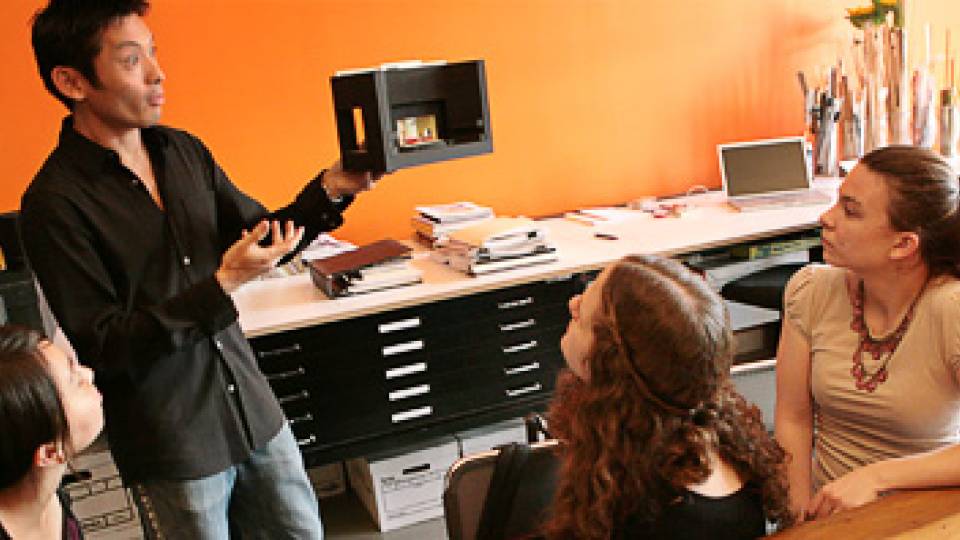Twelve years ago, artist Tim Lefens visited a residential rehabilitation center in New Jersey to talk about painting with a roomful of students who had cerebral palsy and other conditions that confined them to wheelchairs.
Lefens was so moved by the experience that he volunteered to teach an art class at the center, and he launched the course by envisioning what the students were capable of instead of dwelling on their conditions. First he had them spread paint on canvases laid on the floor by riding their wheelchairs over them. Next the students donned headbands with lasers attached to them and indicated to art assistants exactly where they wanted which shades of paint to be applied to their canvases.
"I was introduced to a lot of kids who couldn't walk, talk or use their hands, and they were living in a void, unable to express any sophisticated thought or feeling," said Lefens. "I asked the question, 'If someone couldn't move, how could they create a painting that had perfect fidelity to their vision?' We figured out techniques so the students could create precisely what they wanted in a painting. It's about giving them personal power."
Lefens' techniques allowed the youngsters to express themselves through art, and in the last nine years his nonprofit organization, Artistic Realization Technologies, known as A.R.T., has brought painting to hundreds of other students all over the country.
Now Lefens' innovative approach to art will have a home at the University. Starting Oct. 1, his program will occupy a third-floor studio at 185 Nassau St., the building that is home to Princeton's Program in Visual Arts as well as the programs in creative writing and theater and dance.
Read the full story in the Weekly Bulletin.



